1,2,3-1H-Triazole
- CAS NO.:288-36-8
- Empirical Formula: C2H3N3
- Molecular Weight: 69.07
- MDL number: MFCD00014490
- EINECS: 608-262-3
- SAFETY DATA SHEET (SDS)
- Update Date: 2025-07-24 18:13:49

What is 1,2,3-1H-Triazole?
Description
Triazoles are a family of five-membered rings that contain three nitrogen atoms and two double bonds. The four triazole isomers (1H-1,2,3-, 2H-1,2,3-, 1H-1,2,4-, and 2H-1,2,4-) differ by the arrangement of the nitrogen atoms and the locations of their three hydrogen atoms. All of the triazoles are planar and aromatic.
1H-1,2,3-Triazole, like all triazoles, is highly soluble in water. In aqueous solution it tautomerizes to its 2H-isomer with a 1H/2H ratio of ≈1:2. Both isomers have essentially the same melting and boiling points, making them very difficult to separate from each other.
In 1910, German chemists Otto Dimroth* and Gustav Fester synthesized 1H-1,2,3-triazole by heating a solution of hydrazoic acid (HN3) and acetylene at 100 oC for 70 h. Sodium azide can be used in place of HN3 if the solution is acidified. Dimroth is best known for his discovery of the eponymous rearrangement of amine-substituted 1,2,3-triazoles, in which the substituent nitrogen atom and its nearest ring nitrogen atom exchange places.
The 1,2,3-triazole moiety is considered to be a pharmacophore in that it can interact with specific biological targets. It is a component of such pharmaceuticals as the cephalosporin antibiotic cefatrizine; tazobactam, which broadens the spectrum of certain antibiotics; and carboxyamidotriazole, a calcium channel blocker that may be useful to combat cancer.
Chemical properties
clear colorless liquid
The Uses of 1,2,3-1H-Triazole
A basic 5-membered aromatic heterocycle used as a building block for more complex pharmaceutical compounds. There have been recent studies that showed antitumor, antiinflammatory, analgesic, antifunga l, antibacterial and antiviral activities in bioactive triazoles.
The Uses of 1,2,3-1H-Triazole
It effectively promotes the proton conduction in polymer electrolyte membranes via an intermolecular proton-transfer mechanism. A useful triazole for proteomics research
What are the applications of Application
1H-1,2,3-Triazole is a useful triazole for proteomics research
Definition
ChEBI: 1H-1,2,3-triazole is a 1,2,3-triazole. It is a tautomer of a 2H-1,2,3-triazole and a 4H-1,2,3-triazole.
Synthesis Reference(s)
The Journal of Organic Chemistry, 62, p. 9177, 1997 DOI: 10.1021/jo971313o
General Description
2H-1,2,3-triazole is tautomeric form of 1H-1,2,3-triazole. 1H-1,2,3-triazole effectively promotes the proton conduction in polymer electrolyte membranes via an intermolecular proton-transfer mechanism.
Properties of 1,2,3-1H-Triazole
| Melting point: | 23-25 °C(lit.) |
| Boiling point: | 203 °C752 mm Hg(lit.) |
| Density | 1.192 g/mL at 25 °C(lit.) |
| refractive index | n |
| Flash point: | 225 °F |
| storage temp. | Sealed in dry,Room Temperature |
| solubility | Acetone, Chloroform, Methanol (Slightly) |
| appearance | colorless to yellow liquid |
| pka | 1.17(at 20℃) |
| form | Liquid |
| color | Clear colorless to yellow |
| Specific Gravity | 1.192 |
| Water Solubility | soluble |
| FreezingPoint | 21.0 to 24.0 ℃ |
| BRN | 104766 |
| CAS DataBase Reference | 288-36-8(CAS DataBase Reference) |
| NIST Chemistry Reference | 1H-1,2,3-Triazole(288-36-8) |
Safety information for 1,2,3-1H-Triazole
| Signal word | Warning |
| Pictogram(s) |
 Exclamation Mark Irritant GHS07 |
| GHS Hazard Statements |
H315:Skin corrosion/irritation H319:Serious eye damage/eye irritation H335:Specific target organ toxicity, single exposure;Respiratory tract irritation |
| Precautionary Statement Codes |
P261:Avoid breathing dust/fume/gas/mist/vapours/spray. P264:Wash hands thoroughly after handling. P264:Wash skin thouroughly after handling. P271:Use only outdoors or in a well-ventilated area. P280:Wear protective gloves/protective clothing/eye protection/face protection. P302+P352:IF ON SKIN: wash with plenty of soap and water. P305+P351+P338:IF IN EYES: Rinse cautiously with water for several minutes. Remove contact lenses, if present and easy to do. Continuerinsing. |
Computed Descriptors for 1,2,3-1H-Triazole
| InChIKey | QWENRTYMTSOGBR-UHFFFAOYSA-N |
1,2,3-1H-Triazole manufacturer
JSK Chemicals
New Products
Indole Methyl Resin tert-butyl 9-methoxy-3-azaspiro[5.5]undecane-3-carboxylate Boc-His(Boc)-OH 2-CTC Resin 4-Chloro-7-tosy1-7Hpyrrolo[2,3-d]pyrimidine 5,7-Dibromo-1H-indole 2,5-dichloro-N-hydroxy-4,6-dimethylpyridine-3-carboximidamide 2,2-Dimethoxy-7-azaspiro[3.5]nonane hydrochloride 4-chloromethyl-5-methyl-1,3-dioxol-2-one (DMDO-Cl) R-2-BENZYLOXY PROPIONIC ACID 1,1’-CARBONYLDIIMIDAZOLE 1,1’-CARBONYLDI (1,2-4 TRIAZOLE) N-METHYL INDAZOLE-3-CARBOXYLIC ACID 4-((2-hydroxyethyl)thio)benzoic acid 1-(TERT-BUTOXYCARBONYL)-2-PYRROLIDINONE Methyl 6-methylnicotinate 3-Pyridineacrylic acid tert-Butyl carbazate TETRAHYDRO-2H-PYRAN-3-OL 2-((4-morpholinophenylamino) (methylthio) methylene) malononitrile 3-(4-morpholinophenylamino)-5-amino-1H-pyrazole-4-carbonitrile 2,4-dihydroxybenzaldehyde 1,3-Diethyl-1,3-Diphenylurea Methyl 2-methylquinoline-6-carboxylateRelated products of tetrahydrofuran
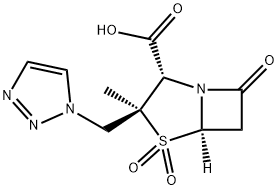
![BENZHYDRYL 6,6-DIHYDROPENICILLIC ACID 1-OXIDE[TAZOBACTAM INTERMEDIATE]](https://img.chemicalbook.in/CAS/20180713/GIF/87579-78-0.gif)
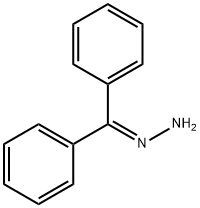

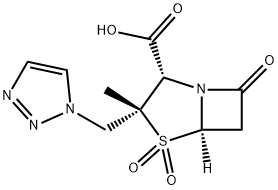
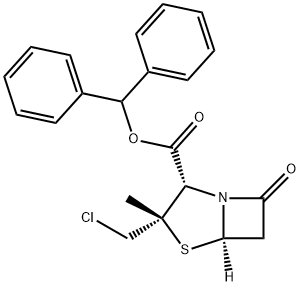
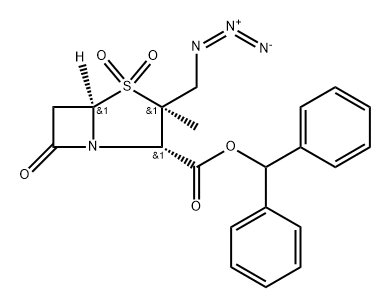
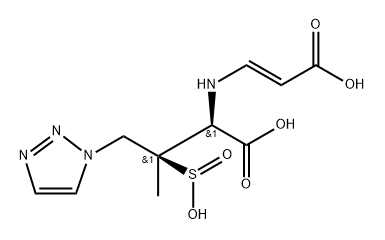
You may like
-
 288-36-8 1,2,3-Triazole 98%View Details
288-36-8 1,2,3-Triazole 98%View Details
288-36-8 -
 288-36-8 1H-1,2,3-Triazole, 98% 99%View Details
288-36-8 1H-1,2,3-Triazole, 98% 99%View Details
288-36-8 -
 1H-1,2,3-Triazole, 99% CAS 288-36-8View Details
1H-1,2,3-Triazole, 99% CAS 288-36-8View Details
288-36-8 -
 1H-1,2,3-Triazole CAS 288-36-8View Details
1H-1,2,3-Triazole CAS 288-36-8View Details
288-36-8 -
 1H-1,2,3-Triazole CAS 288-36-8View Details
1H-1,2,3-Triazole CAS 288-36-8View Details
288-36-8 -
 Pyridine 99.5% HPLC /UV SpectroscopyView Details
Pyridine 99.5% HPLC /UV SpectroscopyView Details
110-86-1 -
 Dibutyl PhthalateView Details
Dibutyl PhthalateView Details
84-74-2 -
 Thiourea 99% ARView Details
Thiourea 99% ARView Details
62-56-6
